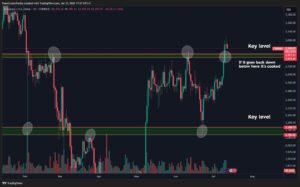Ethereum Gas Limit Rises as Validators Support Network Expansion

ethereum Gas Limit Increase Boosts Network Throughput and Reduces Fees
ethereum‘s network performance saw an uptick over the weekend as validators rallied to support a rise in the gas limit to 45 million units. This adjustment aims to lower transaction costs and enhance the scalability of the network.
Surge in Gas Limit
On Sunday, ethereum‘s gas limit climbed to over 37.3 million units, marking an increase of nearly 3% from the previous week, as reported by Etherscan. Several blocks were proposed with elevated gas limits, indicating a growing consensus among validators. This latest adjustment is the most significant since February, when the limit was raised from 30 million to 36 million units.
Enhanced Transaction Throughput
The increase in gas limits translates to improved transaction throughput on ethereum‘s layer-1 network. Validators have the capability to adjust the gas limit by approximately 0.1% per block when they express support for modifications. Over the weekend, ethereum‘s transaction throughput reached just under 18 transactions per second, a rise from around 15 transactions per second following the last gas limit increase.
Validator Support for Gas Limit Increase
The recent rise in gas limits coincides with a grassroots initiative dubbed “pump the gas,” where nearly half of all staked Ether (ETH) is backing the push to elevate the gas limit to 45 million or more. Vitalik Buterin noted that close to 50% of staked validators are in favor of this increase, with current data showing 47.2% supporting higher limits.
Understanding the Gas Limit
The gas limit defines the maximum gas that can be utilized for executing transactions or smart contracts within each block. Gas fees, paid in Ether, are essential for conducting transactions or executing smart contracts on the ethereum network. The “pump the gas” campaign was initiated in March 2024, aiming to raise the gas limit from 30 million to 40 million, with the goal of reducing layer-1 transaction fees. Buterin highlighted that recent updates to Geth, the leading ethereum node client, enhance the safety of these scaling adjustments through new optimizations for archive nodes.
Rising Ether Activity and Price
In recent months, ethereum‘s network activity has surged, with daily transactions increasing from approximately 1.1 million in April to around 1.4 million currently, according to Etherscan. This rise in activity has been accompanied by a notable increase in Ether’s price, which has soared by 54% over the past month. On Sunday, Ether briefly reached $3,800, marking a seven-month high, as corporate treasuries and exchange-traded funds continue to accumulate the asset.
This latest development in ethereum‘s gas limit and network activity reflects a growing momentum within the ecosystem, promising enhanced efficiency and reduced costs for users.







